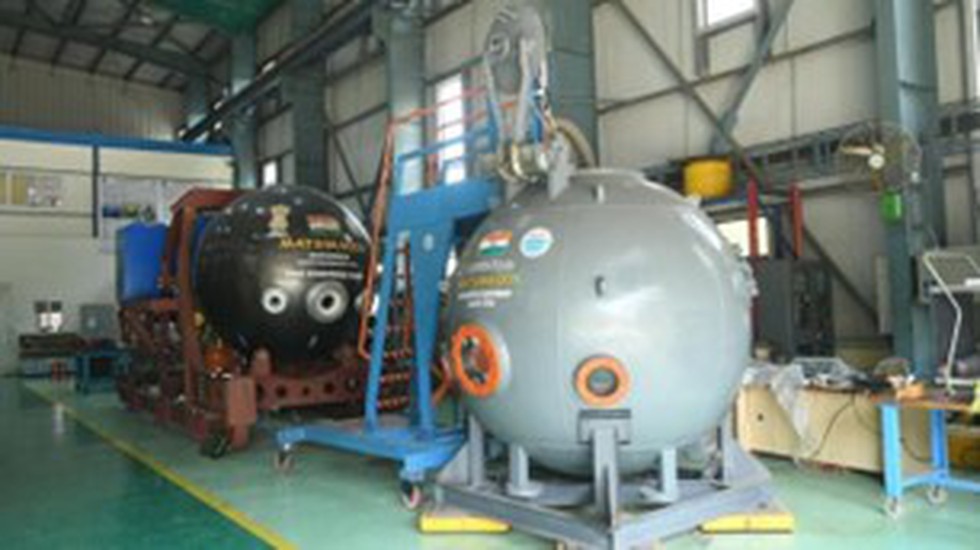
About Matsya-6000:
- It is a manned submersible vehicledeveloped by the National Institute of Ocean Technology (NIOT), Chennai.
- It was developed under the Samudrayaan mission to facilitate humans in the deep ocean in exploring mineral resources.
- It would make India only one among six countries(US, Russia, Japan, France, and China) to have piloted a crewed under-sea expedition beyond 5,000 metres.
- Objectives:
- It will look at chemosynthetic biodiversity in hydrothermal vents and low-temperature methane seeps in the ocean.
- It will also promote tourism and ocean literacy.
- Features:
- It is designed with the capability of operating in the deep sea for 12 hours, while in case of emergency, it can also operate up to 96 hours with all the necessary measures for human safety.
- Made of 80mm-thick titanium alloy, it will be able to withstand a pressure 600 times greater than that at sea level.
- It relies only on gravity, water, and lithium-ion batteries for power.
- It will also feature the ultra-short baseline acoustic positioning system (USBL). This will allow the mothership carrying the transponder to send information and the submersible to respond, which will then let the mothership know where the submersible is.
- This is a flotation device that will rise to the top of the ocean — thus helping to find the submersible even in case it cannot resurface.
Key Facts about Samudrayaan Mission:
- It is India’s first manned mission to explore the deep ocean.
- It is designed to study the deep ocean resources and conduct biodiversity assessments as well.
- The mission will not disturb the ecosystem as the submersible is used solely for exploration purposes.
- The project is part of the larger Deep Ocean Mission, which supports the Central Government’s Blue Economy policy.
- The Ministry of Earth Sciences (MoES) is the nodal ministry to implement this multi-institutional ambitious mission.
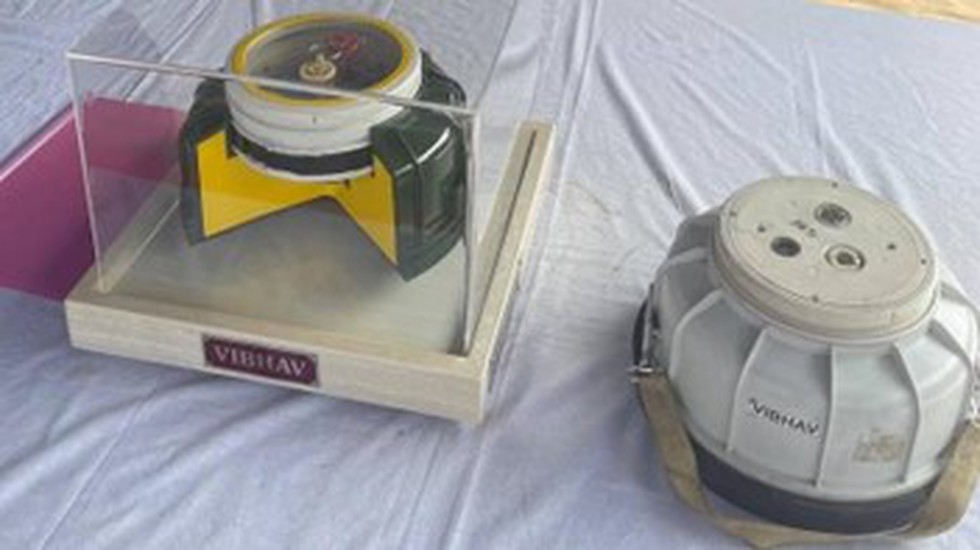
About Vibhav Anti-Tank Munition:
- It is a self-neutralising anti-tank mine.
- Designed and developed completely indigenously in a joint venture with the Defence Research and Development Organisation (DRDO) in India, “Vibhav” is a point-attack anti-tank munition.
- It is designed to provide mobility kill against all enemy armoured vehicles.
- The munition is under production by the Kalyani Group for the Indian Army.
- Features:
- The anti-tank mine is made of new-age plastic, which gives it adequate strength and durability to withstand the requirements of storage, handling and operating in varying field conditions.
- The munition can be laid both mechanically or manually.
- A host of safety and actuation mechanisms have been incorporated in “Vibhav” to make it safe to handle, lethal against targets and reliable.
- The integrated explosive, mechanical and electronic safety features ensure utmost operator safety.
- The munition also incorporates an electronic anti-handling and anti-lift device (EAHALD) that stays active for 120 days once armed.
- It has mechanical timers. Due to this, after 120 days, it will be self-neutralised.
- It has a storage life of 10 years with no special storage requirements.
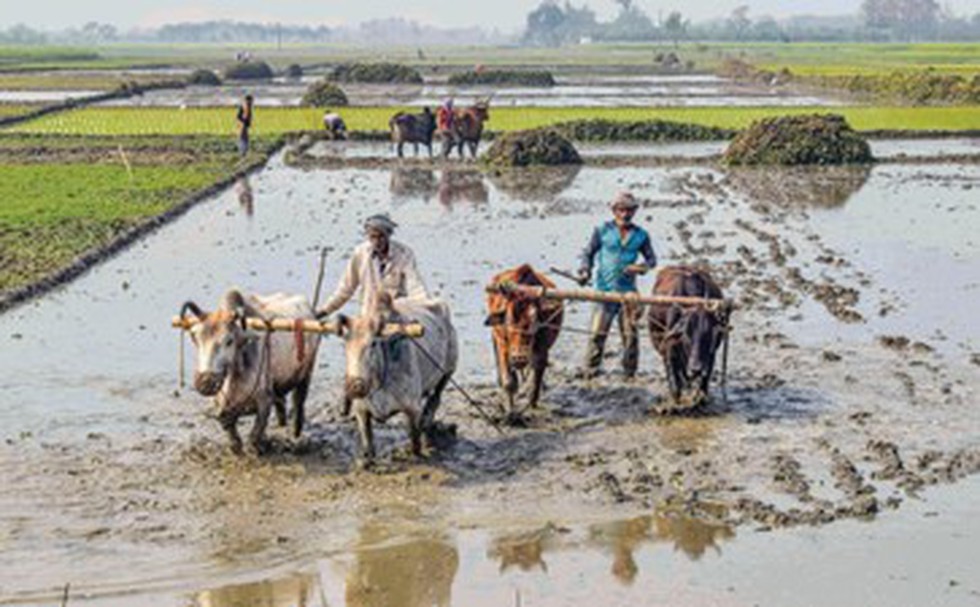
About Kisan Rin Portal:
- The portal helps farmers avail of subsidised loans under the Kisan Credit Card (KCC).
- It was developed in collaboration with multiple government departments.
- It offers a comprehensive view of farmer data, loan disbursement specifics, interest subvention claims, and scheme utilisation progress.
- It fosters seamless integration with banks for more focused and efficient agriculture credit.
Key Facts about the Kisan Credit Card (KCC):
- The Kisan Credit Card (KCC) scheme was introduced in 1998 to issue KCC to farmers on the basis of their holdings for uniform adoption by the banks so that farmers may use them to readily purchase agriculture inputs such as seeds, fertilisers, pesticides, etc and draw cash for their production needs.
- It was developed by NABARD (the National Bank for Agriculture and Rural Development),
- The scheme was further extended for the investment credit requirement of farmers, allied and non-farm activities, in the year 2004.
- The scheme was further revisited in 2012with a view to simplify the scheme and facilitate the issue of Electronic Kisan Credit Cards.
- Applicability: It is to be implemented by Commercial Banks, RRBs, Small Finance Banks and Cooperatives.
- Objective: Aims at providing adequate and timely credit support from the banking system under a single window with a flexible and simplified procedure to the farmers for their cultivation and other needs as indicated below:
- To meet the short-term credit requirements for the cultivation of crops;
- Post-harvest expenses;
- Produce marketing loan;
- Consumption requirements of farmer household;
- Working capital for maintenance of farm assets and activities allied to agriculture;
- Investment credit requirement for agriculture and allied activities.
- Eligibility:
- Farmers - individual/joint borrowers who are owner cultivators;
- Tenant farmers, oral lessees & share croppers;
- Self Help Groups (SHGs) or Joint Liability Groups (JLGs) of farmers, including tenant farmers, share croppers etc.;
- Features:
- Banks provide single credit facility/ term loans to farmers.
- Farmers can take a loan of up to Rs 3 lakh in the scheme.
- Farmers having KCC credit are covered under personal accidental insurance up to Rs 50,000 for permanent disability and death and up to Rs 25,000 for other risks.
- Quantum of loan for the 1st year under this scheme is assessed on the basis of the cost of cultivation, post-harvest expenses and farm maintenance cost.
- For the subsequent 5 years, the loan will be sanctioned on the basis of the increase in the scale of finance.
- The long-term loan limit is based on the proposed investments during the five-year period and the bank’s perception of the repaying capacity of the farmer.
- The repayment period is decided on the basis of the harvesting of the crop and its marketing period.
- Banks will not seek security on loans up to Rs. 1.60 lakh.
- The validity of KCC is for 5 years.

About the Serious Fraud Investigation Office (SFIO):
- It is a corporate fraud investigating agency set up by the Government of India.
- It is a multi-disciplinary organisation under the Ministry of Corporate Affairs.
- It consists of experts in the fields of accountancy, forensic auditing, law, information technology, investigation, company law, capital market and taxation.
- Objective: For detecting and prosecuting or recommending for prosecution white-collar crimes and frauds.
- History: It was set up in 2003 on the basis of recommendations of the Naresh Chandra Committee on corporate governance in the backdrop of stock market scams, the failure of non-financial banking companies and the phenomena of vanishing companies and plantation companies.
- Investigation into the affairs of a company is assigned to SFIO, where the Government is of the opinion that it is necessary to investigate the affairs of a company-
- On receipt of a report of the Registrar or inspector under section 208 of the Companies Act, 2013
- On intimation of a special resolution passed by a company that its affairs are required to be investigated
- In the public interest or on request from any department of the Central Government or a State Government
- Organisational Structure:
- SFIO is headed by a Director as Head of Department in the rank of Joint Secretary to the Government of India.
- The Director is assisted by Additional Directors, Joint Directors, Deputy Directors, Senior Assistant Directors, Assistant Directors Prosecutors, and other secretarial staff.
- Headquarters: The headquarters of SFIO is in New Delhi, with five Regional Offices in Mumbai, New Delhi, Chennai, Hyderabad and Kolkata.
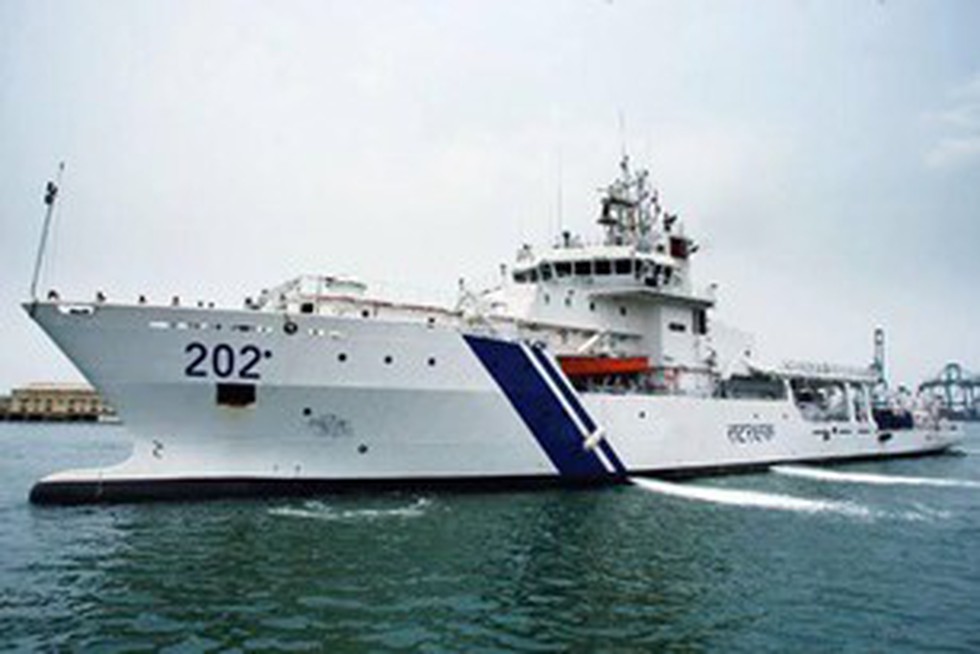
About Operation Sajag:
- It is a coastal security drill conducted by the Indian Coast Guard along the west coast.
- It involved all stakeholders of the Indian coastal security construct.
- A total of 118 ships, including those from Customs, Marine Police, Ports, and the Indian Navy, participated in the drill.
- The drill facilitates revalidation of the coastal security mechanism and brings awareness among the fishermen at sea.
- During the drill, extensive checking and verification of documents and crew passes of all fishing boats, barges and craft at sea was undertaken.
- Biometric card readers have also been issued to security agencies.
- Besides monitoring of dhows, island security and community interaction programmes have been institutionalised under the coastal security construct.
Key Facts about the Indian Coast Guard:
- It is an armed force that protects India's maritime interests and enforces maritime law, with jurisdiction over the territorial waters of India, including its contiguous zone and exclusive economic zone.
- History: it was formally established in 1978 by the Coast Guard Act, 1978 as an independent armed force of India.
- Parent ministry: It operates under the Ministry of Defence.
- Administration: The organisation is headed by the Director General Indian Coast Guard (DGICG).
- HQ: New Delhi
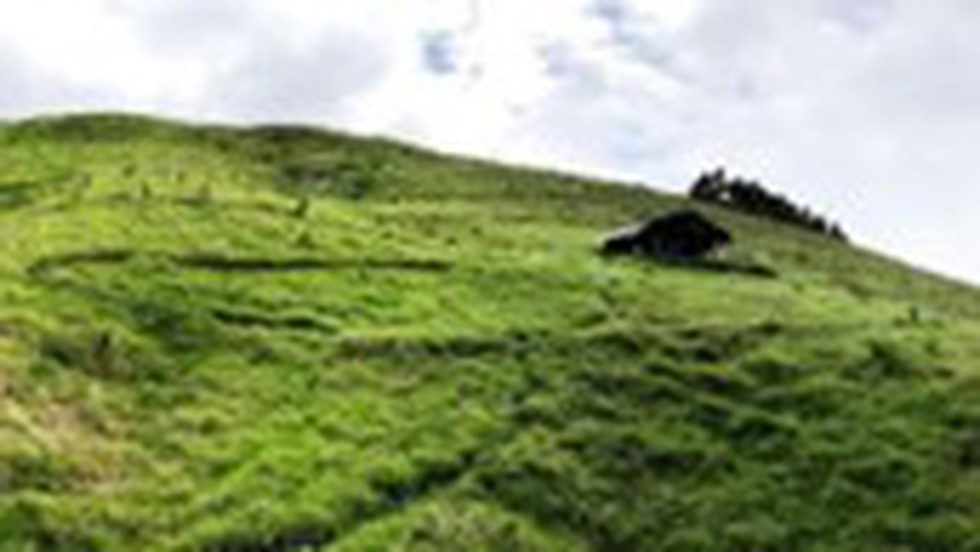
About Anamudi Shola National Park:
- It is located in the state of Kerala.
- It is surrounded by Eravikulam National Park, Pampadum Shola National Park, Chinnar Wildlife Sanctuary and Mathikettan Shola Park.
- Vegetation:
- It consists of southern subtropical hill forests, southern montane wet temperate forests and moist deciduous forests.
- The unique thing in the dense shola woods that houses a dense patch of stunted trees will be the luxurious presence of lichen, mosses, and climbers.
- Flora: The place is home to around 174 species of herbs and shrubs, 62 species of trees and around 40 species of climbers, of which quite a few of them are endemic.
- Fauna: Leopards, civet cats, wolves, Indian bison, wild boars, elephants, tigers, panthers, sloth bears etc.

About Gold exchange-traded funds:
- These are commodity-based exchange-traded funds with an underlying asset as gold.
- These are passive investment instruments that are based on gold prices and invest in gold bullion.
- Gold ETFs are units representing physical gold, which may be in paper or dematerialised form.
- One unit of this und is equal to 1 gram of gold and is backed by physical gold of very high purity.
- They are listed and traded on the National Stock Exchange of India (NSE) and Bombay Stock Exchange Ltd. (BSE).
- There is complete transparency on the holdings of a Gold ETF due to its direct gold pricing.
What is an Exchange Traded Fund (ETF)?
- It is a collection of investments such as equities or bonds.
- It is a basket of securities that trades on an exchange just like a stock does.
- It can contain all types of investments, including stocks, commodities, or bonds.
- They have cheaper fees than other types of funds.
- These funds have much lower expenses as compared to physical gold investments.

About the Bima Sugam platform:
- It will enable individuals to buy life, health, motor or property insurance policies online.
- The platform will enable easy access under a single roof for insurance companies, agents, brokers, banks and even aggregators.
- The platform will act as a centralised database which will assist consumers with all insurance-related
- It will also pave the way for a speedy acceptance of new or sandbox products.
- Cyril Amarchand Mangaldas (CAM) has been appointed as the legal counsel for the project.
- The responsibilities of CAM will include incorporation of Section 8 not-for-profit company, which will be the company owning the Bima Sugam platform.
- The platform will support all personal and commercial/business insurance requirements and support in identifying and comparing optimal products to meet user requirements within stipulated timelines.
- The entire spectrum of insurance offerings through the platform will include life insurance and all its variants — term plans, savings (Par and Non-Par), annuities, pension plans, etc.
- The platform will have to demonstrate an end-to-end digital onboarding journey for all insurance products without any manual interventions.

About the SHREYAS scheme:
- The Scholarships for Higher Education for Young Achievers Scheme- SHREYAS comprises four central sector sub-schemes.
- All these sub-schemes are central sector schemes.
- Free Coaching Scheme for SCs and OBCs:
- The objective of the Scheme is to provide coaching of good quality for economically disadvantaged Scheduled Castes (SCs) and Other Backward Classes (OBCs) candidates to enable them to appear in competitive and entrance examinations for obtaining appropriate jobs in Public/Private Sector as well as for securing admission in reputed technical and professional higher education institutions.
- The ceiling of the total family income under the scheme is 8 lakhs per annum.
- The ratio of SC: OBC students is 70:30, and 30% of slots are reserved for females in each category.
- In case of the non-availability of an adequate number of candidates in the SC category, the Ministry can relax this ratio.
- However, in no case, a less than 50% SC student shall be permitted.
- Top-Class Education for SCs:
- The Scheme aims at recognising and promoting quality education amongst students belonging to SCs by providing full financial support.
- The Scheme will cover SC students pursuing studies beyond the 12th class.
- The scholarship, once awarded, will continue till the completion of the course, subject to satisfactory performance of the student.
- The ceiling of the total family income under the scheme is 8 lakhs per annum.
- Presently, 266 higher education institutes, which include Government institutes and private institutes such as all the IIMs, IITs, NITs, IIITs and AIIMS, are covered.
- Under the scheme, full tuition fees, non-refundable charges and academic allowance expenses are provided.
- National Overseas Scheme for SCs:
- Under this scheme, financial assistance is provided to the selected students from SCs, De-notified, Nomadic and Semi-Nomadic Tribes, landless agricultural labourers and traditional artisan categories for pursuing masters and Ph.D. level courses abroad.
- Such students can benefit under the scheme whose total family income, including the candidate, is less than 8 lakhs per annum, who have more than 60% marks in the qualifying examination, who are below 35 years of age and who secured admission in top 500 QS ranking foreign Institutes/ Universities.
- Under the scheme, total tuition fees, maintenance and contingency allowance, visa fees, to and fro air passage,, are provided to the awardees.
- National Fellowship for SC Students:
- Under the scheme, fellowship is provided to Scheduled Castes students for pursuing higher education leading to M.Phil/PhD degrees in Sciences, Humanities and Social Sciences in Indian Universities/Institutions/ Colleges recognisedby the University Grants Commission (UGC).
- The scheme provides for 2000 new slots per year who have qualified the National Eligibility Test- Junior Research Fellowship (NET-JRF) of UGC and Junior Research Fellows for Science stream qualifying UGC-Council of Scientific and Industrial Research (UGC-CSIR) Joint Test.
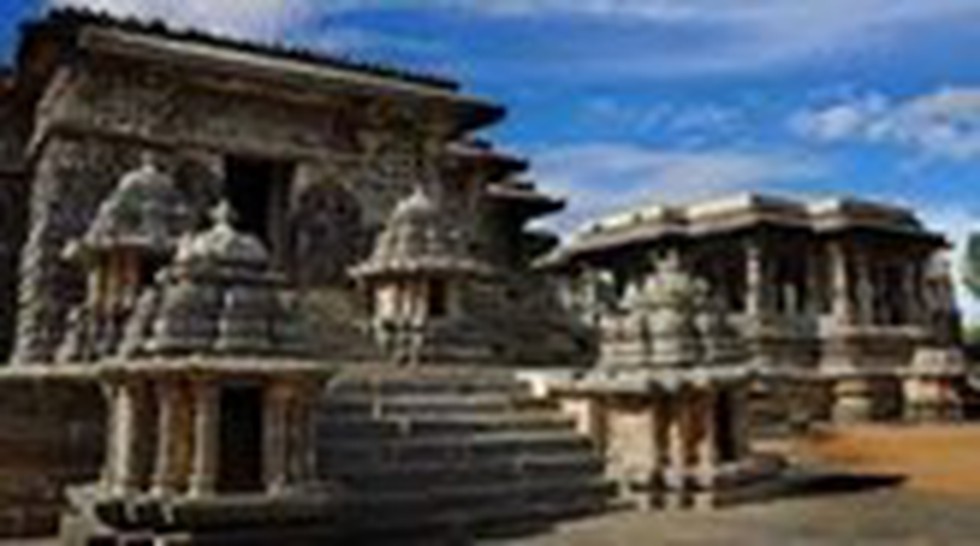
About Sacred Ensembles of the Hoysala
- The Sacred Ensembles of the Hoysalas consist of a collection of Hoysala temples.
- These were built in the 12th-13th centuries and are represented here by the three components of Belur, Halebid, and Somnathapura.
- The three temples include;
- The Chennakeshava temple: It is the main temple in the complex at Belur (Hassan district), located at the centre of the traditional settlement, which is surrounded by the remnants of a mud fort and a moat.
- The Hoysaleswara Temple: It is on the banks of the Dwarasamudra tank in Halebidu (Hassan district), a town which has many protected and unprotected temples, archaeological ruins, and mounds.
- The Keshava Temple: It is at the centre of Somanathapura village (Mysore district).
- These are primarily dedicated to Hindu deities like Shiva and Vishnu, with some also devoted to the Jain faith.
- The Hoysala temples have a basic Dravidian morphology but show strong influences of the Bhumija mode widely used in Central India, the Nagara traditions of northern and western India, and the Karntata-Dravida modes favoured by the Kalyani Chalukyas.
- Features of the architecture:
- The Hoysala architects considered and informed eclectic selections of features from other temple typologies, which they further modified and then complemented with their own particular innovations.
- The Hoysala style was created through a careful selection of contemporary temple features and those from the past to create a different identity from neighbouring kingdoms.
- The shrines are characterised by hyper-real sculptures and stone carvings that cover the entire architectural surface, a circumambulatory platform, a large-scale sculptural gallery, a multi-tiered frieze, and sculptures of the Sala legend.





























































































































































.png)
.png)
.png)
.png)
.png)


.png)
.png)
.png)





.png)
.png)






.png)
.png)
.png)
.png)
.png)
.png)
.png)
.png)
.png)

.png)







.png)
.png)


.png)
.png)
.png)


.png)

.png)
.png)


.jpg)

.png)
.png)


.png)

.png)
.png)
.png)

.jpg)

.jpg)


.png)

.png)
.png)
.png)
.png)
.png)
.png)
.png)
.png)
.png)
.png)




.png)

.png)





.png)
.png)
.png)
.png)
.png)
.png)
.png)
.png)
.png)
.png)
.jpg)
.jpg)

.png)
.png)
.png)
.png)
.png)
.png)
.png)
.png)
.png)
.png)
.png)
.png)
.png)
.png)
.png)
.png)
.png)
.png)
.png)
.png)
.png)
.png)



.png)
.png)

.jpg)
.jpg)


.jpg)
.jpg)
.jpg)
.jpg)
.jpg)

.jpg)








.jpg)
.jpg)
.jpg)
.jpg)
.jpg)

















.jpg)
.jpg)







.jpg)


















.jpg)
.jpg)






























































































.jpg)
.jpg)


























.jpg)

.jpg)










.jpg)








.jpg)




.jpg)










.jpg)


















.jpg)












































.jpg)














.jpg)
.jpg)
.jpg)





.jpg)

.jpg)
.jpg)





































































.jpg)


































.jpg)
.jpg)
















































.jpg)












.jpg)


.jpg)




.jpg)
.jpg)
.jpg)

.jpg)
.jpg)
.jpg)
.jpg)

.jpg)
.jpg)
.jpg)

.jpg)
.jpg)
.jpg)
.jpg)
.jpg)
.jpg)
.jpg)
.jpg)

.jpg)


.jpg)
.jpg)
.jpg)
.jpg)
.jpg)
.jpg)
.jpg)
.jpg)
.jpg)
.jpg)











.jpg)
.jpg)





.jpg)
.jpg)
.jpg)
























.jpg)
























.jpg)









.jpg)
.jpg)







.jpg)
.jpg)









































.jpg)
.jpg)
.jpg)
.jpg)
.jpg)

.jpg)
.jpg)
.jpg)
.jpg)
.jpg)


.jpg)
.jpg)
.jpg)
.jpg)
.jpg)

.jpg)
.jpg)
.jpg)
.jpg)
.jpg)
.jpg)
.jpg)
.jpg)
.jpg)
.jpg)
.png)

.png)
.png)

.png)
.png)
.png)
.png)


.jpg)
.jpg)

.jpg)
.jpg)
.jpg)

.png)
.png)
.png)
.png)
.png)
.png)
.png)

.png)
.png)
.png)
.png)
.png)
.png)
.png)
.png)
.png)
.png)





































































-min.png)



.png)




.png)








































